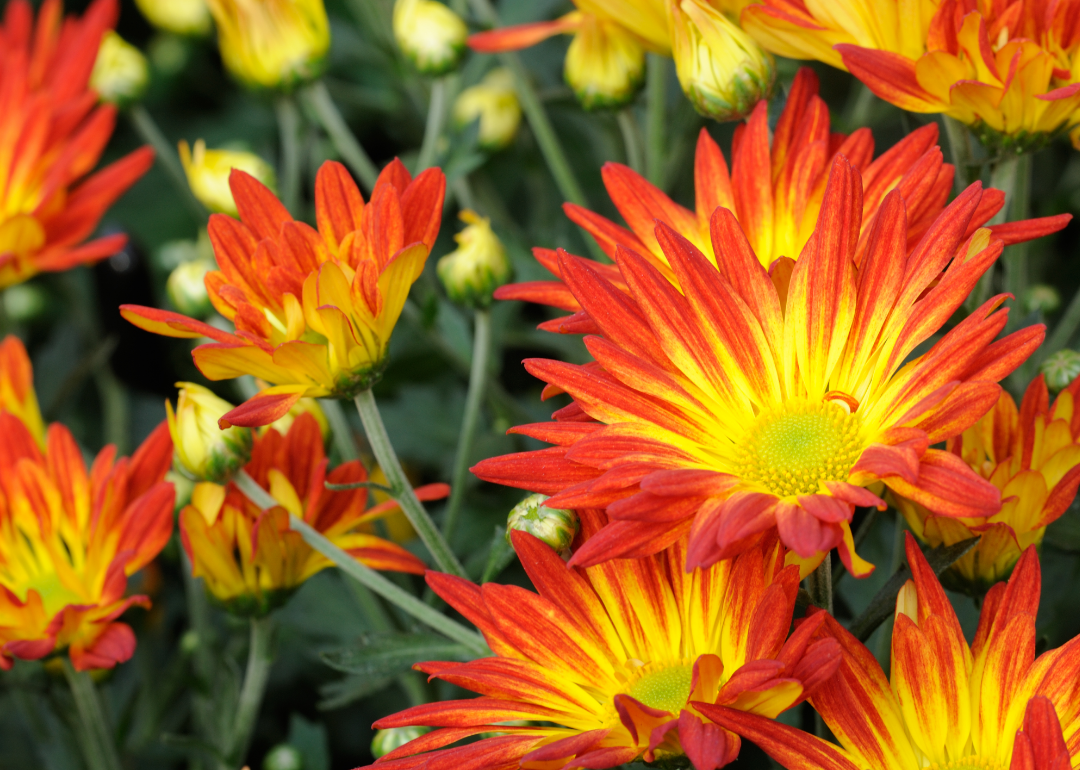
Flowers that will add color to your garden throughout the year
This story originally appeared on Angi and was produced and distributed in partnership with Stacker Studio.
Flowers that will add color to your garden throughout the year
Planning a garden of any size can be a challenge, so consider answering a few questions before you get started. Are you growing food, or is it merely a decorative space? Is there enough sunshine, is the soil well-fertilized, and is there adequate space for the plants? It's also good to keep in mind which arrangement will encourage growth and prosperity for all of the plants, and what will look the best. And with all the hard work that goes into gardening, why not enjoy a garden that looks gorgeous year-round?
Springtime in the garden is wonderful—seeing flowers alive with color and growth for four or five months out of the year is something every gardener looks forward to—but what about the other eight months? To avoid looking at a patch of empty, dormant ground for that long, a little planning can go a long way.
To help with learning about that process, Angi compiled a list of 10 types of flowers that will produce colorful blooms at different times throughout the year, including flowers that bloom during the traditionally colorless winter months. From vibrant summer flowers like hibiscus to early winter stunners like crocus, each of these plants will do their part in keeping any garden visually interesting at any season.
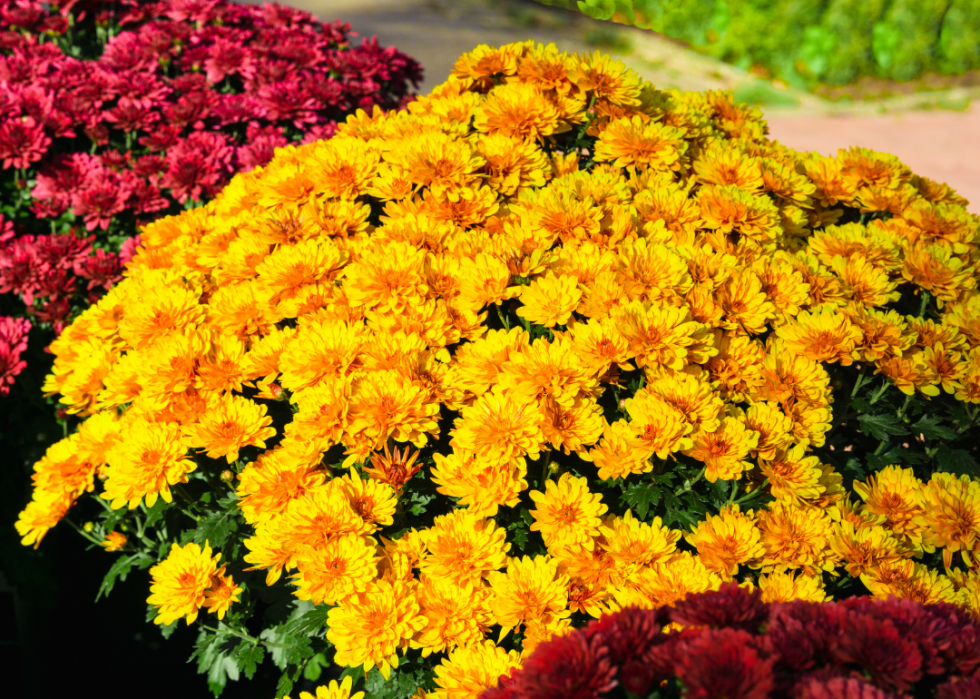
Chrysanthemums
- Season in bloom: Fall
First cultivated in China as early as the 15th century B.C., chrysanthemums come in a rainbow of jewel tones, from classic gold to bright pink. When planting mums from seeds, it’s best to get the perennial plant in the ground in early spring, which gives it plenty of time to grow before it begins flowering in September and October. A hardy flower, chrysanthemums don’t require much attention to flourish, only needing direct sunlight, good drainage to prevent molding, and ample space. On average, the plants can grow up to 3 feet wide, so space is really key when deciding where and how many to plant. The Old Farmer’s Almanac also suggests pinching off the top two to three leaves of new shoots before the buds begin forming to make the chrysanthemums bushier, which in turn, gives space for more blooms.
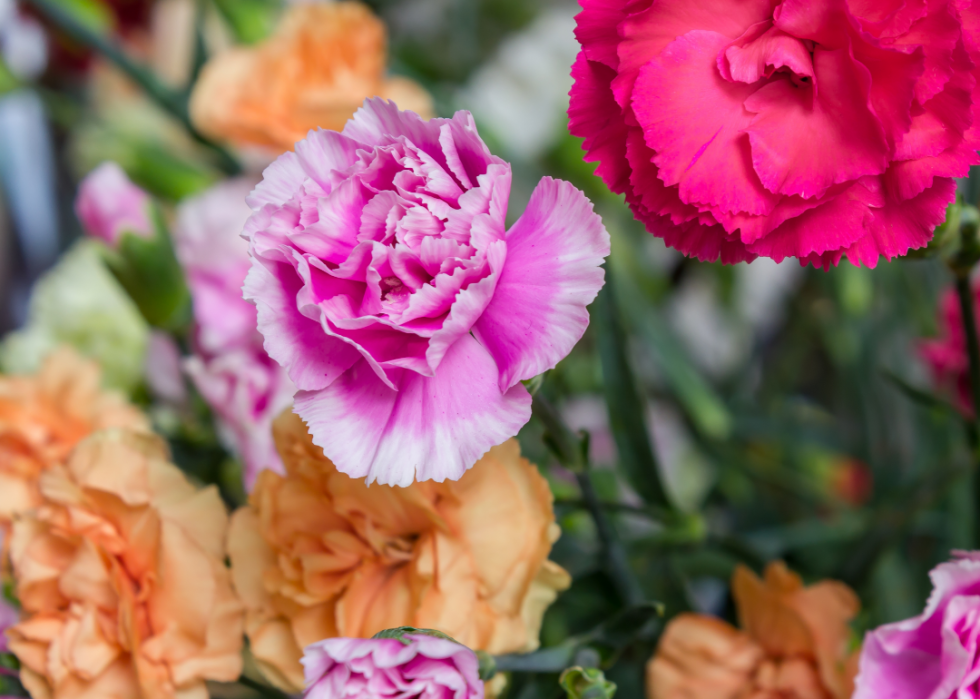
Carnations
Season in bloom: Late spring
Another incredibly easy-to-grow and beautifully colorful flower is the carnation. It is best to plant these flowers in transition seasons, like spring or fall, when it is not too hot and not too cold since extreme temperatures can stunt growth when the flowers are young. Carnations require a lot of water for the first week after planting to help them develop a strong root system. Beyond that initial period, they only need moist soil and four hours of sunlight a day to thrive. Regular pruning also encourages the flowers to continue producing vibrant blossoms. Beware, though, the colorful flowers are poisonous to both cats and dogs, so gardeners with pets might want to skip adding this particular option to their beds.
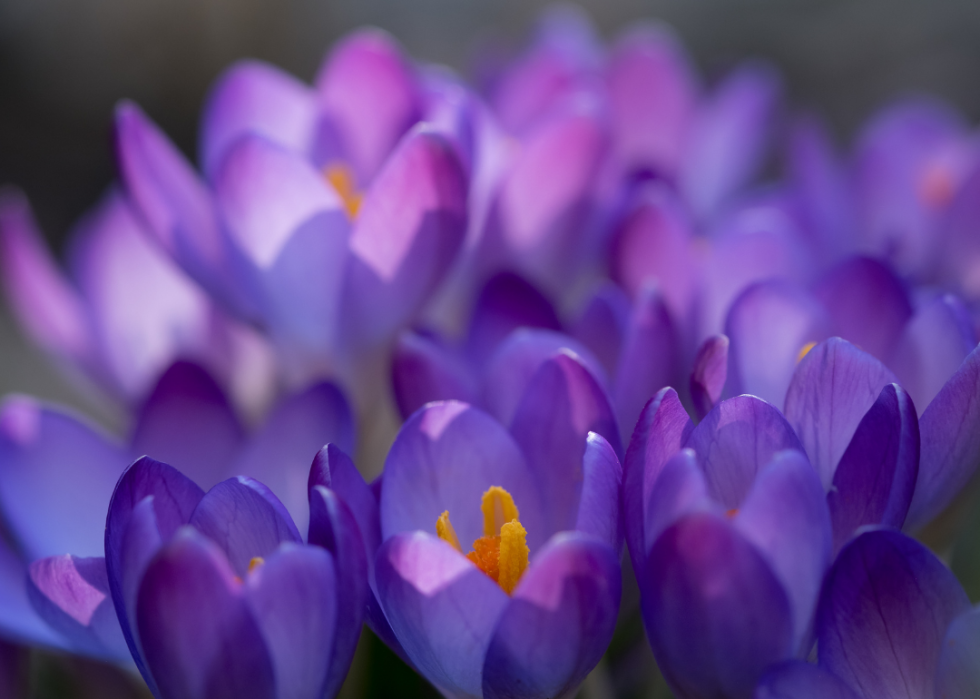
Crocuses
Season in bloom: Winter
Early bloomers, crocuses are often among the first flowers to push through the snow and frozen ground in the late winter. An incredibly low-maintenance plant, crocuses require little in the way of water, fertilizer, or space. Given that they bloom when everything else is bare, gardeners don’t really need to worry about finding them lots of sunlight—they’ll get as much as they need simply because there will be nothing blocking the rays. While crocus colors fade quickly as the weather warms, planting a variety of species in the same area has been demonstrated to keep the blooms going for a little longer. Additionally, waiting to prune dying leaves allows the crocuses to gather as much energy as possible from the wilting foliage, which can keep them open and growing into early spring.
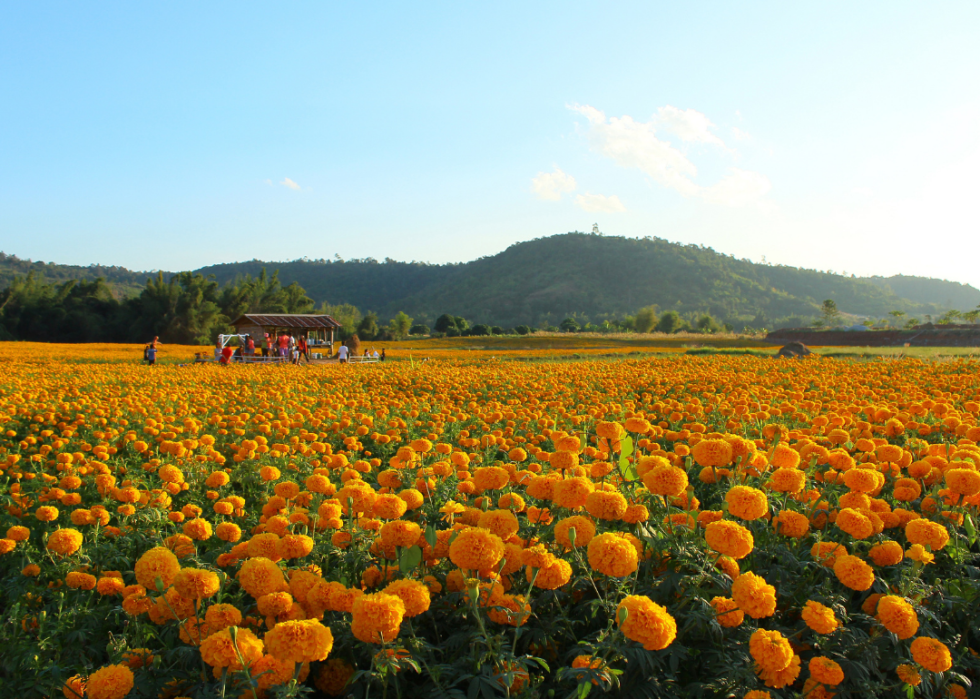
Marigolds
Season in bloom: Spring through midsummer
Marigolds are a summer garden staple. While many flowers can't survive the hottest summer months without special conditions, marigolds thrive in direct sunshine and can withstand hot temperatures and infrequent watering. The yellow and orange flowers will begin to bloom in early spring and, if properly deadheaded, will continue to bloom until early fall. Their extensive root system is known to prevent harmful microscopic worms from taking up residence in the flowerbeds and vegetable gardens where they are planted, making them excellent companion plants. Also, the petals of one species of marigold, Calendula, can be eaten, adding a spicy tang to any dish.
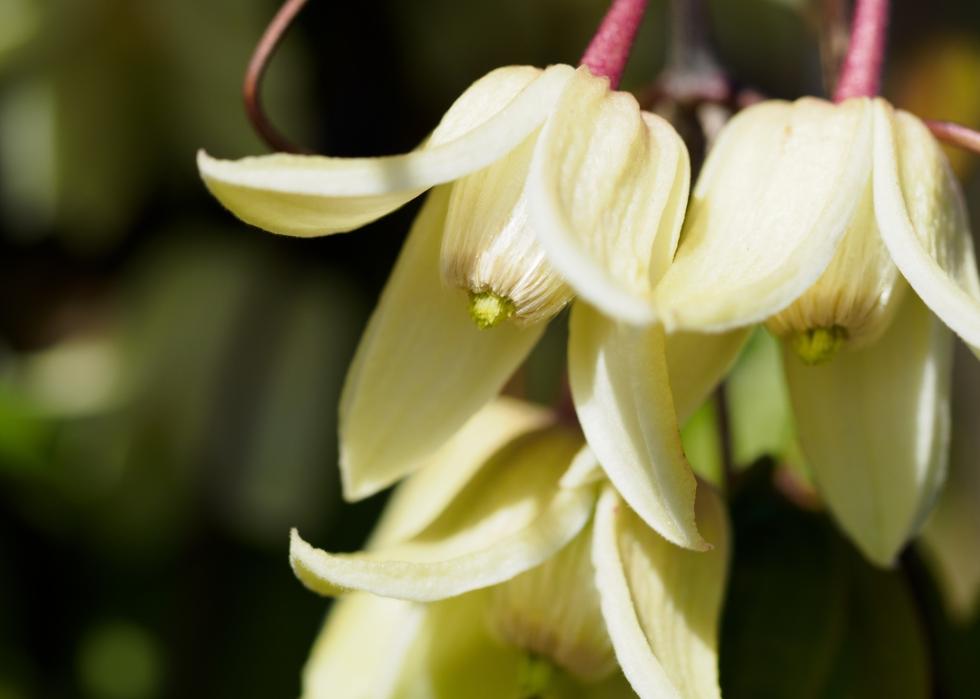
Winter-blooming clematis
Season in bloom: December
If you’re after a plant that takes truly little to no work to grow, consider a winter-blooming clematis. The tough evergreen vine thrives year-round, blossoming during the coldest months of the year. It grows best in direct sunlight, with plenty of water and fertilizer during the warmer months, but only needs the most basic care once the weather turns cooler. Clematis’ white and purple flowers attract plenty of bees, whose presence and pollination are key for a colorful spring and summer garden. Even better, the vine is not an aggressive one. Gardeners don’t need to worry about it choking out their plants, and can install this one wherever suits their fancy.

Daffodils
Season in bloom: Early to mid-spring
An early spring flower, daffodils provide pops of vibrant yellow and stunning white in gardens that are otherwise just beginning to awaken. Planting these perennials in late autumn will ensure you have dozens of blossoms by the time the ground begins to thaw. Moist soil and partial sunshine are all these plants need, but a little bit of fertilizer and consistent deadheading will encourage the flowers to bloom for longer. The Golden Ducat is the most popular variety of daffodil, thanks to its classic yellow color and eye-catching height of between 12 to 16 inches tall. Similar to carnations, daffodils can be toxic to cats and dogs, so be wary of planting the flower in places near your pets’ play areas in the yard.
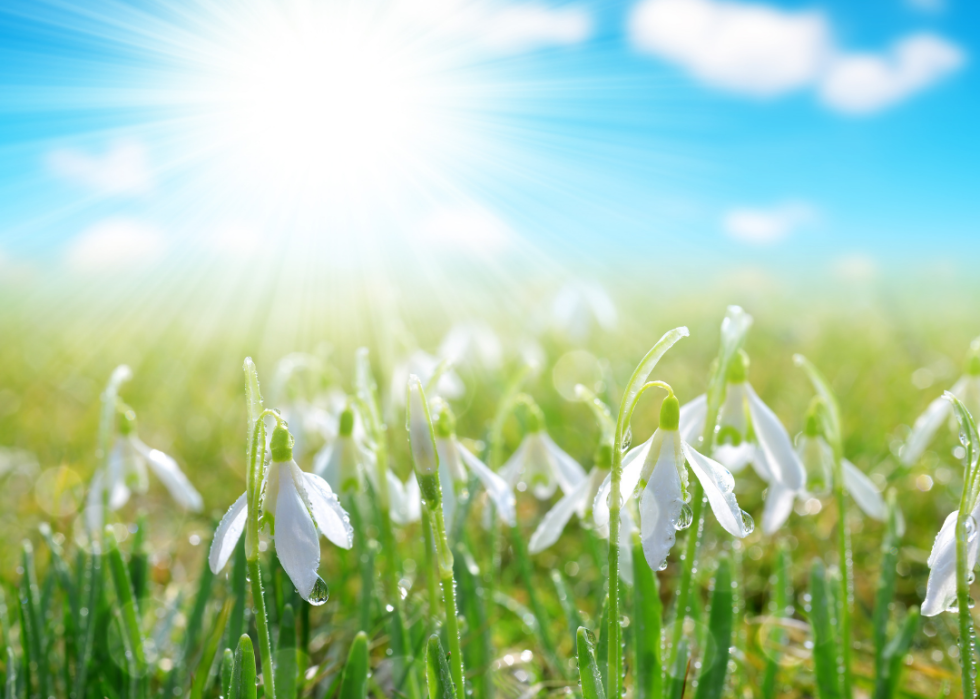
Snowdrops
Season in bloom: January–February
Most flowers need some level of sun and warmth to prosper, but snowdrops are an exception. These small flowers—which gardeners should plant in late autumn—lie dormant during the summer months and bloom in the dead of winter. They thrive in cooler temperatures and shade, meaning they won’t work in gardens in states like California, Texas, and Florida. They multiply on their own via offsets (new bulbs that attach to the original bulb), so after a few years of planting, you can expect quite a good ground cover from the petite plants as long as they aren’t disturbed during the warmer parts of the year. Snowdrops are also pest-resistant, as regular offenders like mice, chipmunks, and deer don’t like the taste of the flower or bulb.
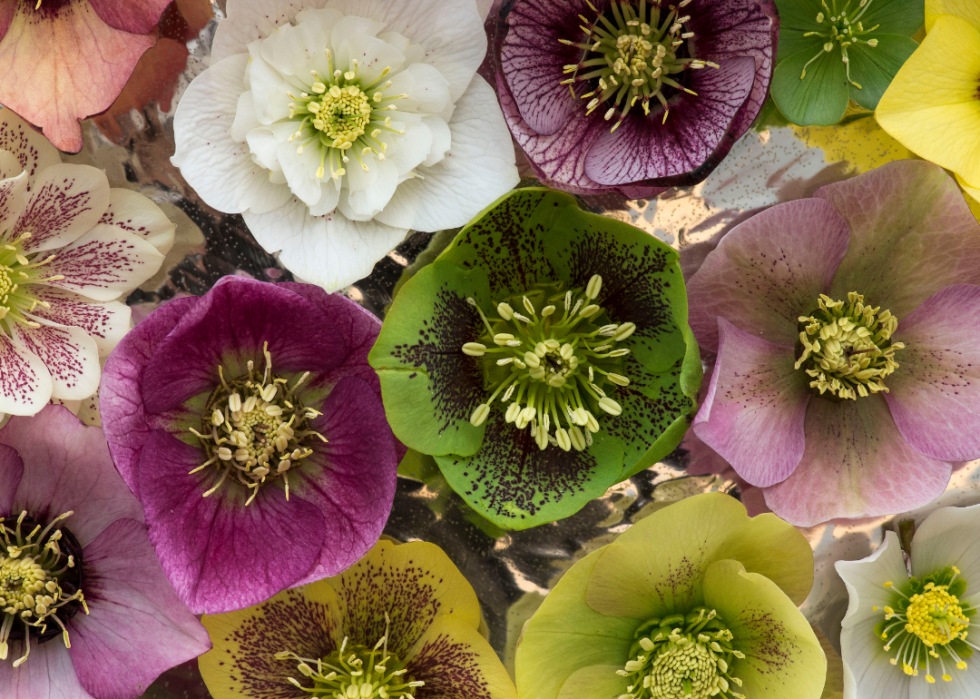
Hellebores
Season in bloom: November to early spring
A member of the buttercup family, hellebores are a low-to-the-ground plant that blooms from late November through the winter and into early spring. It’s best to purchase the flowers as fully grown plants from a local garden center rather than plant them as seeds because they are slow to grow and can take a long time to push through the soil. Hellebores’ flowers range in color—from white to green to pink—and can even change shades significantly from the start of the season to the end. The plants thrive in shady or partially sunny areas with light watering and frequent trimming of dead leaves. Unlike marigolds, you can't consume hellebores—all parts of the winter flower are toxic if ingested by humans.
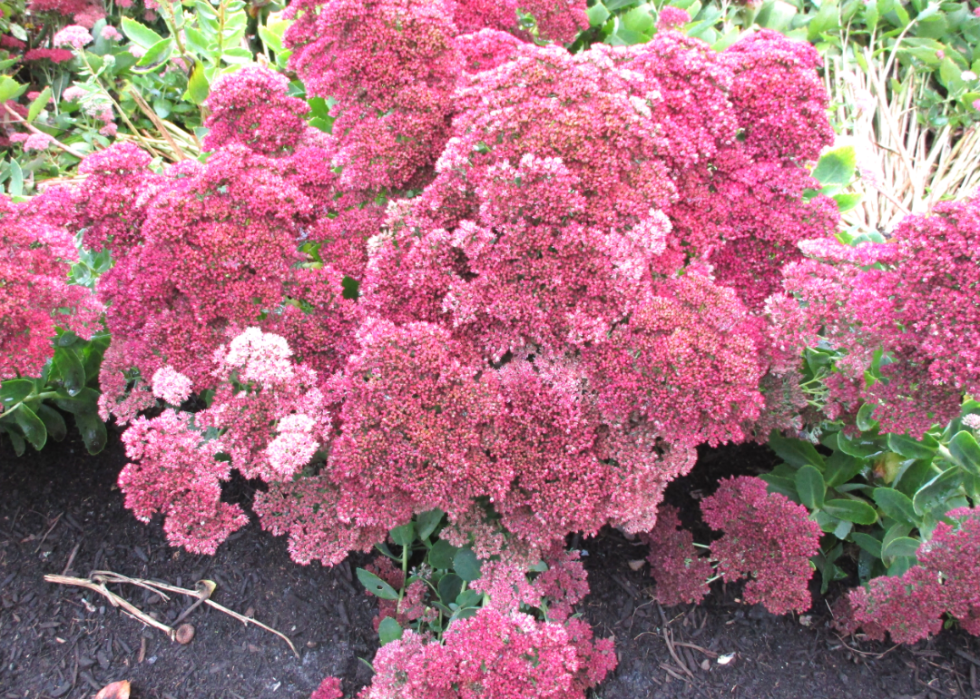
Stonecrop sedums
Season in bloom: Fall
Stonecrop sedums are succulents that flourish in hot, dry climates. Gardeners looking to include these plants in their gardens will need to ensure they are placed in areas with direct sunshine and watered infrequently. Stonecrop sedums are drought-resistant, so dry soil is not a concern. The flower heads will begin to emerge in early spring, though they should not turn from green to a vibrant hot pink until the end of the summer or early fall. In order to ensure a later and longer-lasting bloom, perform the “Chelsea Chop” on more mature specimens—by cutting back at least half of the stems to the ground, the plants won’t flop over but will stretch skyward, allowing the tiny flower to come in fully. The flowers themselves are incredibly nectar-rich, which can help attract invaluable pollinators during the latter half of the year.

Hibiscus
Season in bloom: Summer
There are two types of hibiscus. Perennial hibiscus flowers for a certain part of the year—in this case, late spring to early summer—before going dormant during the colder months; and tropical hibiscus, which is best planted in pots, indoors, or greenhouses. Both varieties produce vibrant and colorful flowers, though the blooms tend to last longer on tropical hibiscus. Both varieties also require direct sunlight, frequent watering, and ample amounts of fertilizer. Pruning the hibiscus plants regularly, whether tropical or perennial, will encourage the plants to bloom for longer periods, as will trimming them completely before cold weather hits. You can use clipped and dried hibiscus flowers to make teas, simple syrups, and desserts, meaning these plants are good for more than just providing a pop of color in the garden.



